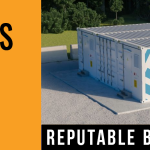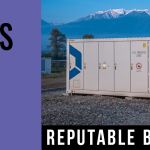 We generally think of energy storage, especially when coupled with renewable energy, as clean and green.
We generally think of energy storage, especially when coupled with renewable energy, as clean and green.
But the California Public Utilities Commission (CPUC), through its Self-Generation Incentive Program (SGIP), has discovered that SGIP energy storage projects actually increase greenhouse gas emissions.
Once again, the state is leading the way with its environmental policies, this time with a proposal to cut greenhouse gas emissions (GHG) due to energy storage. The CPUC staff has issued a proposal that’s expected to address the problem and possibly create a program replicable elsewhere, as California did with its emissions trading efforts.
“In a similar, data-forward, hands-off approach the CPUC took to introducing ’emissions trading’, the GHG signal proposal would arm the industry with accurate up-to-date data and then get out of the way. That approach scaled to become an essential pollution control across the globe, and I see the GHG signal doing the same,” said Gavin McCormick, executive director, WattTime, who participated in the working group that created the proposal.
The energy storage emissions problem was uncovered by the 2017 and 2016 SGIP Advanced Energy Storage Impact Evaluation reports. They showed that under the current system, SGIP energy storage projects increase GHG emissions — for both residential and non-residential projects, McCormick said.
Bad timing creates emissions
Energy storage’s ability to reduce GHG emissions is all about when batteries are charged using grid power — and what incentives are available to ensure they’re stored at the right time. SGIP storage has led to a net increase in greenhouse gas emissions, in part because most time-of-use (TOU) rates aren’t designed to reduce charging energy storage when grid power is creating high greenhouse gas emissions, said the CPUC staff in its proposal.
In addition, existing retail rates provide incentives for customers to prioritize demand charge management over TOU rate arbitrage, it said.
read more
 Regulatory changes at the national level coupled with policy programmes in leading states will drive residential and commercial energy storage to new heights, according to various sources at this week’s Energy Storage International in California.
Regulatory changes at the national level coupled with policy programmes in leading states will drive residential and commercial energy storage to new heights, according to various sources at this week’s Energy Storage International in California. Key Capture Energy (KCE) and NEC Energy Solutions (NEC) are teaming up on KCE NY 1, a 20 MW battery storage project in Upstate New York’s Saratoga County.
Key Capture Energy (KCE) and NEC Energy Solutions (NEC) are teaming up on KCE NY 1, a 20 MW battery storage project in Upstate New York’s Saratoga County. Siemens Gamesa Renewable Energy is close to completing a pilot project that can turn decommissioned thermal power plants into high-performance storage facilities for renewables.
Siemens Gamesa Renewable Energy is close to completing a pilot project that can turn decommissioned thermal power plants into high-performance storage facilities for renewables. Over the past six years, 110 villages in Africa and Asia received their power from solar panels and batteries that use zinc and oxygen. The batteries are the basis of an innovative energy storage system created by NantEnergy, a company owned by Patrick Soon-Shiong, a biotech entrepreneur and surgeon originally from South Africa.
Over the past six years, 110 villages in Africa and Asia received their power from solar panels and batteries that use zinc and oxygen. The batteries are the basis of an innovative energy storage system created by NantEnergy, a company owned by Patrick Soon-Shiong, a biotech entrepreneur and surgeon originally from South Africa. Renault is launching today a new “Advanced Battery Storage” program today.
Renault is launching today a new “Advanced Battery Storage” program today. ENGIE North America and Holyoke Gas & Electric (HG&E) today unveiled Massachusetts’ largest utility-scale energy storage system at a ceremony at the Mt. Tom Solar Farm in Holyoke, Massachusetts. ENGIE Storage Services (formerly Green Charge) will operate the 3-MW GridSynergy system, which will be fully integrated into the largest community solar farm in the state at a location adjacent to the former Mt. Tom Power Station. The former coal and oil-fired generation facility, 90 miles west of Boston, operated for more than 50 years and ceased operation in 2014.
ENGIE North America and Holyoke Gas & Electric (HG&E) today unveiled Massachusetts’ largest utility-scale energy storage system at a ceremony at the Mt. Tom Solar Farm in Holyoke, Massachusetts. ENGIE Storage Services (formerly Green Charge) will operate the 3-MW GridSynergy system, which will be fully integrated into the largest community solar farm in the state at a location adjacent to the former Mt. Tom Power Station. The former coal and oil-fired generation facility, 90 miles west of Boston, operated for more than 50 years and ceased operation in 2014.



